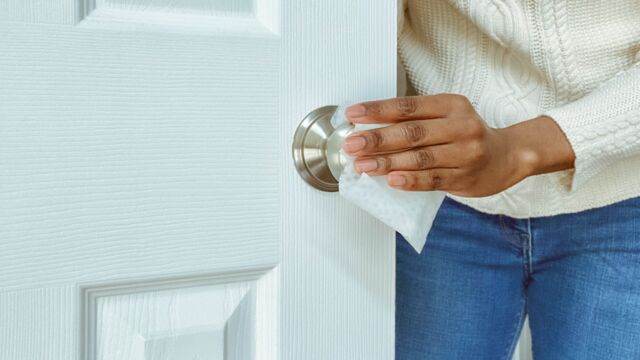Coronavirus: How long can this virus linger on contaminated surfaces and how can we get rid of it?

Recent studies based on analysis carried out on previous strands of the coronavirus such as SARS and MERS imply that the COVID-19 could linger on contaminated surfaces for up to several days.
The coronavirus epidemic is continuing to ravage the whole world. To try and contain this virus, several measures have been put into place all around the world. Quarantine, limited air travel, disinfection of entire areas and even neighbourhoods, press releases on hygiene measures…
Discover our latest podcast
The main banks in China have even started to perform a deep clean of their assets, even if this means destroying some of it. Because as it turns out, the coronavirus can survive and linger on the surface of money and consequently infect others.
More under this adMore under this adUp to nine days
Scientists still haven’t been able to determine just how long this new strand of the Chinese coronavirus can survive on contaminated surfaces. However, they have been able to come up with an idea based on the analysis carried out on other strands of the coronavirus such as SARS and MERS.
According to a study published in 'The Journal of Hospital Infection’ in February, the coronavirus can remain on inanimate surfaces such as plastic or glass for up to nine days.
More under this adMore under this adWhen interviewed by CNN, Dr. Charles Chiu, professor of infectious diseases at the University of California, San Francisco, explains why this study provides viable information on the COVID-19 virus, even though it does not analyse the virus directly.
‘Based on the current, available data, I would primarily rely on the data from SARS coronavirus, which is the closest relative to the novel coronavirus - with 80% sequence similarity - among the coronaviruses tested. [...] However, it is very difficult to extrapolate these findings to the novel coronavirus due to the different strains, viral tilters and environmental conditions that were tested in the various studies and the lack of data on the novel coronavirus itself.’
More under this adMore under this adEffective disinfection
In light of these results, researchers then tried multiple methods to try and disinfect contaminated surfaces in order to see which were the most effective. And it seems that there are several methods available that anyone can do.
The coronavirus ‘can be efficiently inactivated by surface disinfection procedures with 62-71% ethanol, 0.5% hydrogen peroxide or 0.1% sodium hypochlorite' or bleach within just one minute of exposure.
More under this adMore under this adIf these strange-sounding names don’t mean much to you, don’t worry. They are components that can be found, for example, in hydro-alcoholic and disinfectant solutions sold in all shops.
So there is always a way to get rid of this contagious coronavirus, which, remember, can survive on contaminated surfaces for up to nine days. But as well as this, don’t forget to impose certain hygiene rules such as regularly washing your hands after touching day-to-day objects such as those on public transport, avoiding shaking hands with others, not touching your face and avoiding busy public areas…
More under this ad